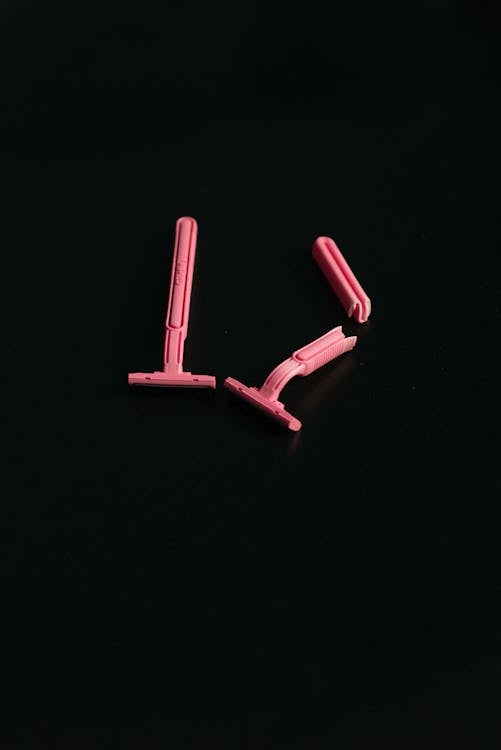Imagine walking into a store and picking up two nearly identical razors—one blue, one pink. Despite being the same product, the pink one costs more. This price discrepancy, known as the “pink tax,” is the hidden cost of being a woman. Across a range of products—from personal care items to clothing and even medical devices—women often pay more for goods that are functionally identical to those marketed toward men.
But the pink tax is just one piece of a broader issue: many products are designed with men as the default, leading to serious consequences for women’s health and safety. From crash-test dummies modeled after the "average" male body to medications that don’t account for differences in female biology, gender bias in product design puts women at risk.

Image Credit: Pavel Danilyuk on Pexels
Let us slide into your dms 🥰
Get notified of top trending articles like this one every week! (we won't spam you)What Is the Pink Tax?
The pink tax isn’t an actual government-imposed tax—it’s a term used to describe the higher prices women pay for products and services compared to men. Studies have repeatedly shown that items such as razors, deodorants, and even dry cleaning services cost more for women than for men.

Image Credit: Iketsi on Wikimedia Commons
A 2015 report by the New York City Department of Consumer Affairs found that products marketed to women cost 7% more on average than similar men’s products. The biggest disparities were in personal care products, which were 13% more expensive for women. Even children's toys and clothing showed pricing differences, subtly reinforcing gendered spending habits from an early age.
The pink tax isn’t just about individual purchases—it adds up over a lifetime. According to some estimates, the extra costs amount to thousands of dollars over a woman’s lifetime. Combined with the gender pay gap, this economic disparity deepens financial inequality.

Take the Quiz: Which Squid Game Player Are You?
Ever wondered which player you’d be if you found yourself in the Squid Game universe? Take this quiz to find out which character matches your perso...
The Hidden Dangers of Male-Centered Product Design
Beyond pricing differences, many everyday products are designed primarily with men in mind. This bias has serious consequences, particularly when it comes to health and safety.
1. Car Safety: Crash-Test Dummies Favor Male Bodies
Car safety standards have long been based on crash-test dummies modeled after the average male body—a 5’9”, 170-pound man. Women, who tend to have different skeletal structures, muscle distribution, and height, are 47% more likely to be seriously injured in a car crash than men and 17% more likely to die.
Although female crash-test dummies exist, they are often just scaled-down versions of male models rather than accurate representations of female anatomy. In many crash tests, they are even placed in the passenger seat rather than the driver’s seat, reinforcing the outdated assumption that men are the primary drivers.

Image Credit: Transport for NSW on Wikimedia Commons
2. Medical Research: Women’s Health Takes a Backseat
For decades, medical research has used men as the default test subjects. Many clinical drug trials historically excluded women, often due to concerns about hormonal fluctuations affecting results. But this exclusion has had serious consequences—women experience different symptoms for conditions like heart attacks and react differently to medications, yet many treatments are still based on male-centered research.
For example, Ambien, a common sleep medication, was prescribed to women at the same dose as men for years, despite the fact that women metabolize it more slowly. As a result, women were at greater risk of next-day drowsiness, which increased the likelihood of car accidents. The FDA eventually recommended lower doses for women—but only after years of preventable harm.
3. Personal Protective Equipment (PPE) That Doesn’t Fit Women
From police uniforms to medical gloves, much of the protective equipment designed for workers is sized for men. Women in male-dominated fields like firefighting and construction often struggle to find safety gear that fits properly, which can put them at higher risk of injury.
During the COVID-19 pandemic, many female healthcare workers reported that N95 masks were too large, leaving gaps that reduced their effectiveness. Poorly fitting equipment is more than just an inconvenience—it’s a health hazard.

Image Credit: Dan Galvani Sommavilla on Pexels
The Fight for Fairness: What’s Being Done?
The good news is that awareness of the pink tax and gender bias in product design is growing, and activists, lawmakers, and consumers are pushing for change.
1. Legislative Action Against the Pink Tax
Some governments have started taking steps to ban gender-based pricing. In 2020, California passed the Pink Tax Repeal Act, making it illegal for businesses to charge more for products based on gender. Similar efforts have been proposed at the federal level in the U.S., and countries like France have also cracked down on discriminatory pricing.
2. Advocating for Gender-Inclusive Design
Consumer advocacy groups and researchers are pushing industries to adopt more inclusive standards. Some car manufacturers have begun incorporating female crash-test dummies in safety tests, and medical researchers are recognizing the need for [censored]-specific studies.

Image Credit: Kaboompics.com on Pexels
3. Conscious Consumerism
Consumers can also take action by supporting brands that price their products fairly and calling out gender-based price disparities. Apps like "Pink Tax Rebate" help shoppers identify and avoid overpriced women’s products.
Conclusion
The pink tax is more than just an unfair pricing strategy—it’s a symptom of a larger issue: the assumption that men are the default. From overpriced razors to unsafe crash-test standards, gender bias in product design affects women’s finances, health, and safety.
As awareness grows, so does the demand for change. Whether through legislation, corporate accountability, or consumer activism, the fight for fair pricing and inclusive design is gaining momentum. Achieving true gender equality means addressing not just the pay gap but also the hidden costs and risks built into everyday products. It’s time to demand better.








.jpg)


